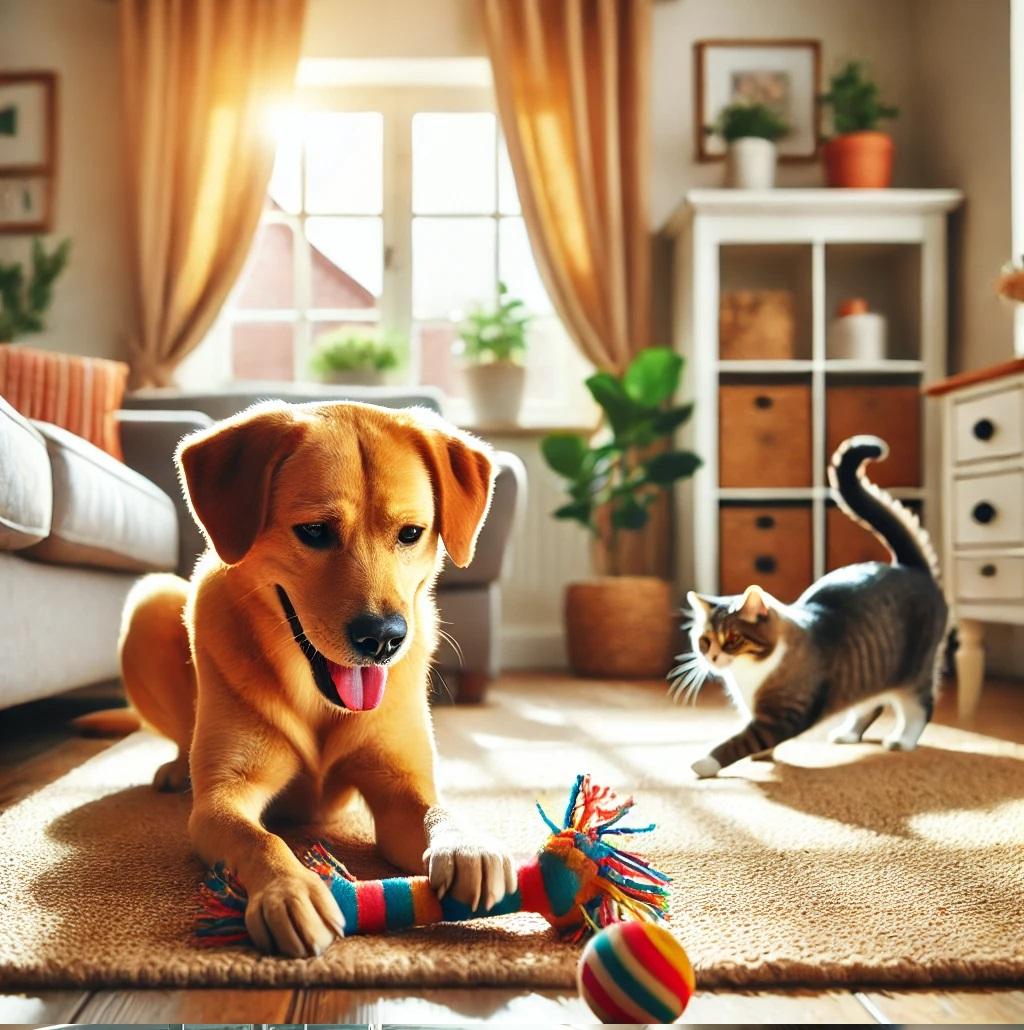
Choosing the right toy for your furry friend is more than just a fun task—it's essential for their health, development, and happiness. Just like humans, pets need different kinds of stimulation at various stages of life. A toy that's perfect for a playful puppy might not be suitable for a senior dog, and the same goes for cats, rabbits, or any other pet.
In this guide, we’ll explore the key factors to consider when picking the perfect toy for your pet based on their age and size. Whether you have a tiny kitten, an energetic adult dog, or a senior rabbit, you’ll find helpful tips to make playtime safe and enjoyable.
Why Choosing the Right Toy Matters
Toys aren’t just about fun; they serve several important functions:
- Mental stimulation: Toys prevent boredom and destructive behavior.
- Physical exercise: Active toys help keep pets fit and healthy.
- Emotional well-being: Comfort toys can reduce anxiety and loneliness.
- Training aid: Some toys help teach commands and encourage positive behavior.
- Dental health: Certain toys clean teeth and strengthen jaws.
Picking the right toy ensures your pet benefits in all these ways without the risk of injury or frustration.
Toys for Different Pet Ages
1. Toys for Young Pets (Puppies, Kittens, Baby Rabbits, etc.)
Young pets are full of energy, curiosity, and a need to explore the world. Their toys should be safe, engaging, and suitable for their developing bodies.
Best Types of Toys for Young Pets:
✔ Soft Plush Toys – Comforting for small pets, especially those separated from their mothers.
✔ Chew Toys – Helps soothe teething pain in puppies and kittens.
✔ Interactive Toys – Puzzle toys that encourage mental development.
✔ Balls & Chase Toys – Encourage movement and coordination.
Toy Safety Tips for Young Pets:
- Choose non-toxic materials.
- Avoid small parts that could be swallowed.
- Select gentle textures to prevent damage to soft gums and baby teeth.
2. Toys for Adult Pets (Dogs, Cats, Rabbits, Ferrets, etc.)
Adult pets need toys that provide exercise, mental engagement, and training opportunities.
Best Types of Toys for Adult Pets:
✔ Tug-of-War Toys – Great for building strength and satisfying natural instincts.
✔ Fetch Toys – Balls and frisbees promote active play.
✔ Treat-Dispensing Toys – Keeps them entertained while rewarding good behavior.
✔ Climbing & Scratching Toys – Essential for cats to exercise and sharpen claws.
✔ Burrowing & Digging Toys – Fun for rabbits and ferrets who love to dig.
Toy Safety Tips for Adult Pets:
- Match the durability of the toy to your pet’s strength.
- Check for wear and tear regularly to avoid choking hazards.
- Avoid strings or ribbons that could cause digestive issues.
3. Toys for Senior Pets (Older Dogs, Cats, Rabbits, etc.)
Senior pets need toys that keep them active without overexerting them.
Best Types of Toys for Senior Pets:
✔ Soft Chew Toys – Gentle on aging teeth and gums.
✔ Scent-Based Toys – Stimulate their senses when vision or mobility declines.
✔ Slow-Paced Interactive Toys – Puzzle toys to maintain cognitive function.
✔ Comfort Toys – Soft, warm toys that help reduce anxiety.
Toy Safety Tips for Senior Pets:
- Ensure easy-to-grip and lightweight toys.
- Avoid hard materials that may cause dental damage.
- Choose soothing toys that provide emotional comfort.
How to Choose the Right Toy Based on Your Pet’s Size
1. Small Pets (Toy Breeds, Kittens, Small Rabbits, etc.)
Small pets need lightweight, easy-to-handle toys.
Ideal Toy Features for Small Pets:
- Soft and easy to carry in their mouths.
- Not too hard to prevent injuries.
- Sized appropriately to avoid choking.
Toys to Avoid for Small Pets:
✖ Large or heavy toys that are difficult to carry.
✖ Toys with large openings where they might get stuck.
2. Medium-Sized Pets (Beagles, Medium Cats, Ferrets, etc.)
Medium-sized pets require toys that provide enough engagement without being too small or too big.
Ideal Toy Features for Medium-Sized Pets:
- Durable materials to withstand moderate chewing.
- Interactive designs that challenge their intelligence.
- Appropriate size to avoid swallowing hazards.
Toys to Avoid for Medium-Sized Pets:
✖ Fragile toys that break easily.
✖ Toys meant for much smaller animals, as they can be a choking hazard.
3. Large Pets (Labradors, Maine Coon Cats, Giant Rabbits, etc.)
Large pets need sturdy, high-quality toys that can withstand their strength.
Ideal Toy Features for Large Pets:
- Heavy-duty materials for strong jaws.
- Large enough to prevent accidental swallowing.
- Mentally engaging to prevent boredom.
Toys to Avoid for Large Pets:
✖ Small toys that can be swallowed.
✖ Thin, weak materials that won’t last long.
Factors to Consider When Choosing a Toy
1. Durability
A toy should withstand your pet’s play habits. For example, heavy chewers need tough rubber toys, while gentler pets may prefer soft plush toys.
2. Safety
- Ensure no small parts can break off.
- Choose non-toxic materials.
- Regularly check for damage.
3. Purpose of the Toy
- For exercise, go for fetch or chase toys.
- For mental stimulation, use puzzle or interactive toys.
- For teething or chewing, pick durable rubber chew toys.
4. Your Pet’s Preferences
Observe your pet’s behavior. Do they love chasing, chewing, cuddling, or solving puzzles? Their play style will guide your choice.
DIY Toy Ideas for Pets
If you’re on a budget or love being creative, try these simple DIY toy ideas:
- Sock & Tennis Ball Toy: Put a ball inside an old sock and tie it up.
- Toilet Paper Roll Puzzle: Hide treats inside and fold the edges.
- Frozen Treat Toy: Freeze a carrot or toy in water for a fun challenge.
- Crinkly Bottle Toy: Put a plastic bottle inside an old fabric to create a fun, crunchy sound.
These DIY ideas are affordable and just as entertaining as store-bought toys.
Final Thoughts
Finding the perfect toy for your pet's age and size is crucial for their happiness and well-being. Whether they are young and playful, active and curious, or older and gentle, there’s always a perfect toy out there for them.
To explore more pet care tips, visit https://furlove365.com/.
Choose toys that match your pet’s needs, observe their preferences, and keep safety in mind. A well-chosen toy will not only keep them entertained but also strengthen the bond between you and your beloved companion.

